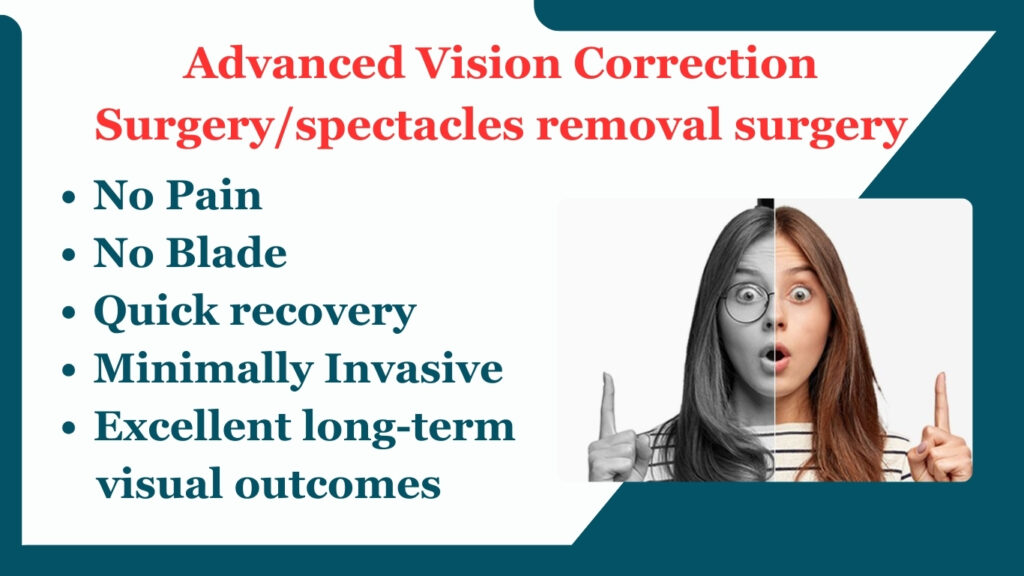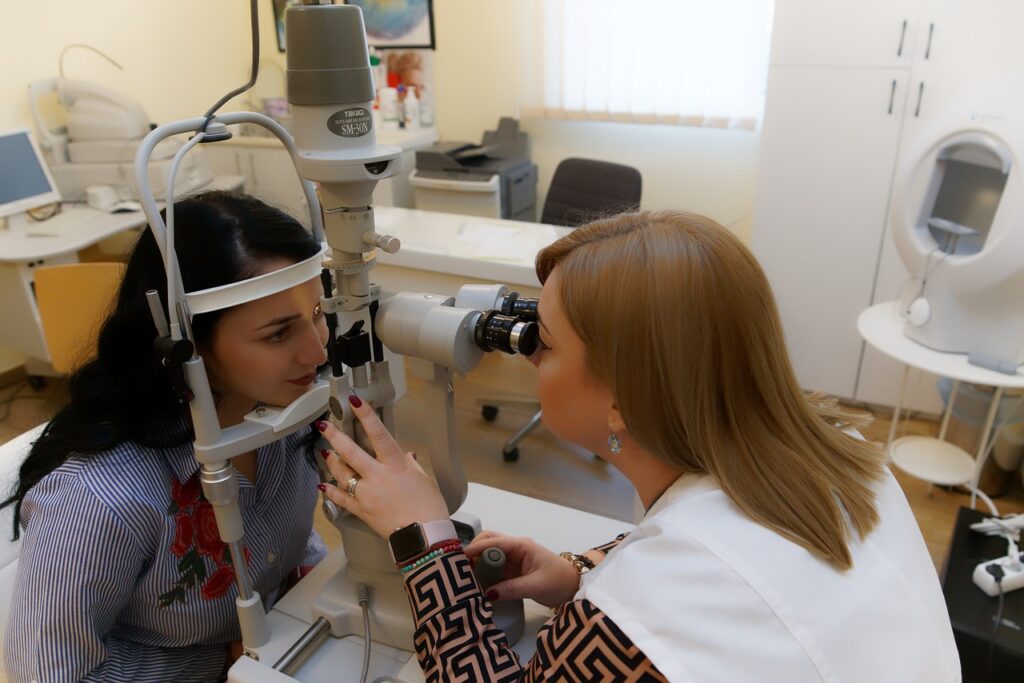Ideal Age Limit for Spectacle Removal Surgery Explained
Ideal Age Limit for Spectacle Removal Surgery Explained Spectacle removal surgery has become a popular solution for individuals seeking freedom from glasses or contact lenses. One common question that comes up is, “Am I the right age for this procedure?” Understanding the specs removal surgery age limit is key to determining whether you’re a suitable candidate. In this blog, we’ll explore the ideal age range for undergoing the procedure, important factors like power stability, and what to expect as your eyes change with age. Starting Age for Spectacle Removal Surgery The minimum age for spectacle removal surgery is typically 18 years or older. This is because the eyes are still developing during childhood and adolescence, and refractive errors (like myopia, hyperopia, or astigmatism) may continue to change until the late teens. Key Considerations for Young Patients Stable Prescription: A critical requirement for spectacle removal surgery is that your prescription must have remained stable for at least one year. This means there should be no significant changes in your refractive error during this period. Eye Development: By the age of 18, most individuals experience minimal changes in their eye structure, making it safe to proceed with surgery. If you’re under 18 but eager to explore vision correction options, consult an expert ophthalmologist to discuss alternatives like orthokeratology (Ortho-K lenses) or specialized contact lenses. Maximum Age Limit for Spectacle Removal Surgery There is no strict upper age limit for spectacle removal surgery. Many adults in their 50s, 60s, or even older undergo procedures like LASIK, PRK, SMILE, or lens-based surgeries (ICL/IPCL) to achieve clear vision. However, there are some important considerations for older patients: 1. Presbyopia After 38–40 Years What is Presbyopia? Around the age of 38–40, most individuals begin to experience presbyopia—a natural aging process where the eye’s lens loses flexibility, making it difficult to focus on near objects. Impact on Surgery Outcomes: Even after successful spectacle removal surgery, patients over 40 may still need reading glasses for near tasks like reading or using mobile devices. This is not a limitation of the surgery but a natural part of aging. 2. Cataract Risk in Older Adults As individuals age, the risk of developing cataracts increases. If cataracts are present, your surgeon may recommend combining refractive surgery with cataract removal or opting for advanced intraocular lenses (IOLs) that correct both conditions. Why Stability of Power is Critical One of the most important factors in determining eligibility for spectacle removal surgery is the stability of your prescription. Your refractive error must remain unchanged for at least one year before undergoing surgery. This ensures that the results of the procedure will be long-lasting and effective. How to Check Stability Regular eye exams by an experienced ophthalmologist can help track changes in your prescription. If your power continues to fluctuate, your surgeon may recommend delaying the procedure until your prescription stabilizes. Procedure Options Based on Eye Condition The choice of procedure depends on your eye condition, such as corneal thickness, anterior chamber depth (ACD), and refractive error—not solely on age. Here’s a quick guide: 1. Cornea-Based Procedures Best For: Patients with healthy corneas, adequate corneal thickness, and no underlying eye conditions. Procedures Include: LASIK, PRK, Trans PRK, SMILE. Why? These procedures reshape the cornea to correct refractive errors and are ideal for patients with stable prescriptions and sufficient corneal tissue. 2. Lens-Based Procedures Best For: Patients with thin corneas, high prescriptions, or insufficient corneal thickness for cornea-based procedures. Procedures Include: ICL (Implantable Collamer Lens) or IPCL (Implantable Phakic Contact Lens). Why? These procedures involve implanting an artificial lens inside the eye without altering the cornea, making them suitable for patients with specific anatomical requirements. Why Choose Shanthi Nethralaya for Spectacle Removal Surgery? At Shanthi Nethralaya, led by Dr. B. Shanthi Niketh, patients receive personalized care tailored to their unique vision needs. Here’s why we stand out: 1. Expert Guidance Dr. B. Shanthi Niketh evaluates each patient’s eye condition, including corneal thickness, ACD, and prescription stability, to recommend the most suitable procedure. 2. Advanced Technology Our clinic is equipped with cutting-edge diagnostic tools and surgical equipment to ensure precise and safe outcomes. 3. Transparent Consultations We provide detailed explanations about the risks, benefits, and expected outcomes of each procedure, helping you make an informed decision. 4. Comprehensive Care From pre-surgery consultations to post-operative follow-ups, our team ensures a smooth and stress-free experience. Addressing Common Concerns About Age and Surgery Here are answers to some frequently asked questions about age and spectacle removal surgery: 1. Can teenagers undergo spectacle removal surgery? No, surgery is generally not recommended for individuals under 18 due to ongoing eye development and prescription changes. 2. Is surgery safe for older adults? Yes, spectacle removal surgery is safe for older adults, provided they are in good overall health and their eyes are free from conditions like advanced glaucoma or severe dry eye. 3. Will I need glasses after surgery if I’m over 40? You may need reading glasses for near tasks due to presbyopia, but your distance vision will remain clear and sharp. Achieve Clear Vision at Any Age While the ideal age for spectacle removal surgery starts at 18, there is no upper age limit. The choice of procedure depends on your eye condition, such as corneal thickness and anterior chamber depth, rather than age alone. With advancements in technology and expert care, patients of all ages can enjoy the freedom of glasses-free vision. For those seeking the best spectacle removal surgery in Hyderabad, Shanthi Nethralaya is the ideal choice. With Dr. B. Shanthi Niketh’s unmatched expertise, advanced technology, and a patient-first approach, Shanthi Nethralaya ensures that every patient achieves the clearest, sharpest vision possible. Protect Your Vision Today! Your eyes are your windows to the world—don’t neglect them. For personalized advice and comprehensive eye care, visit Shanthi Nethralaya and consult Dr. Shanthi Niketh. Book your appointment now to ensure lifelong healthy eyes! Book Appointment














